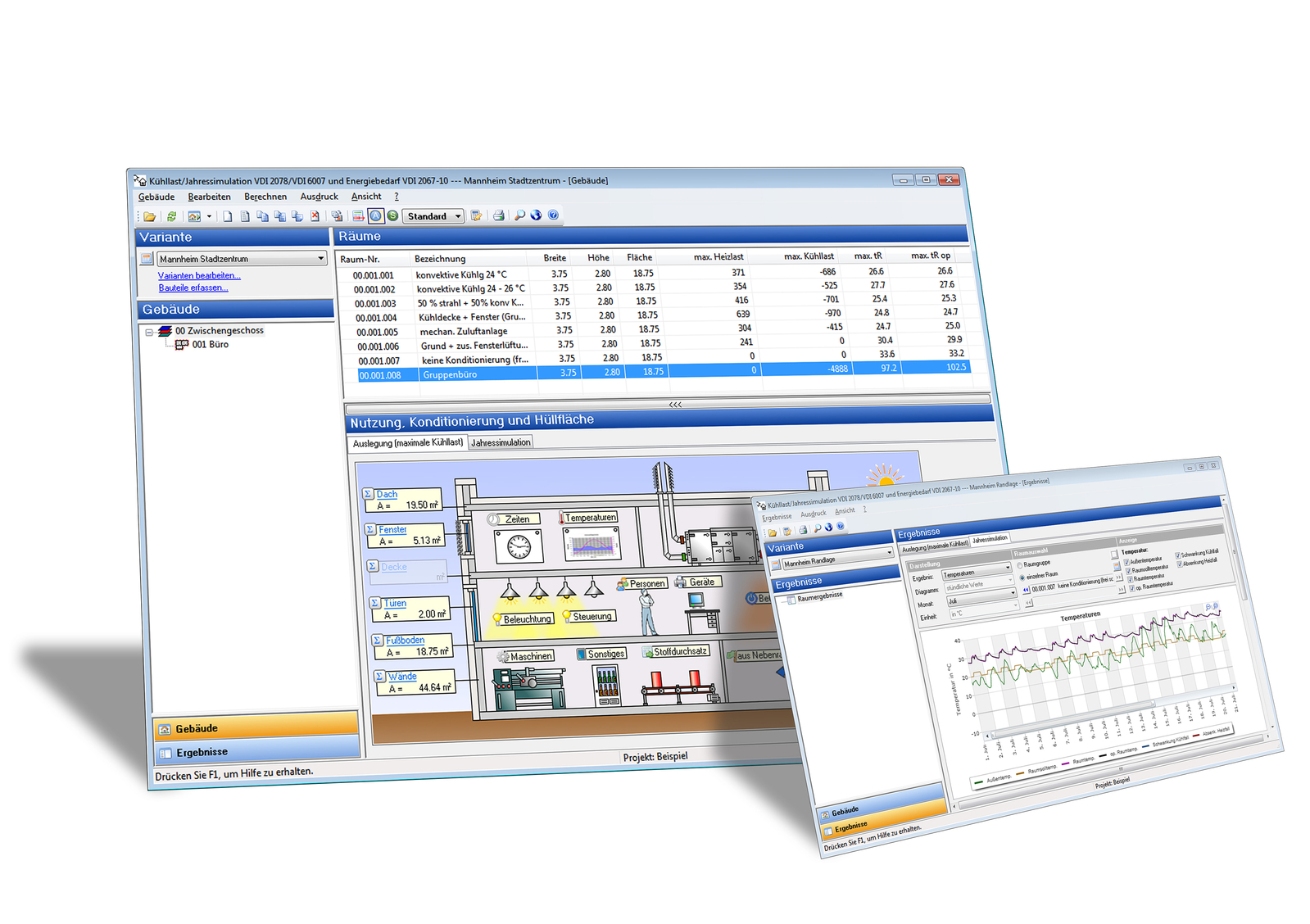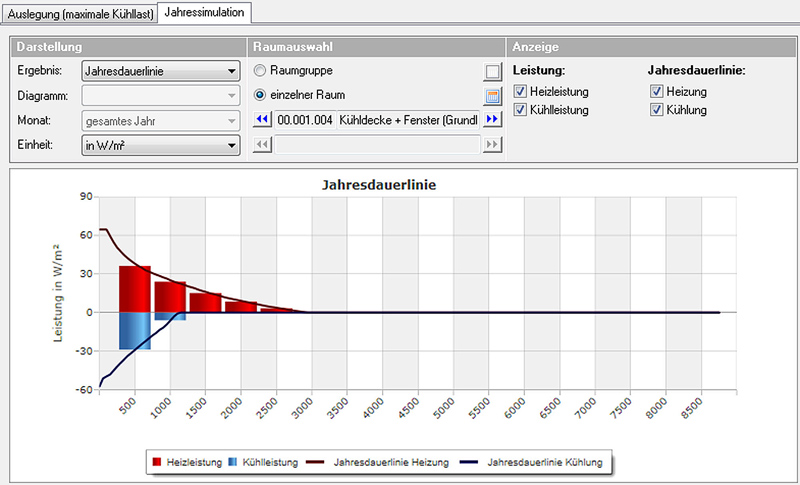You are here: / Home
Software for technical building equipment

Design cooling load and energetic annual simulation (VDI 2078, VDI 6007, VDI 6020)
Software development
The algorithms, which are in conjunction with up-to-date standards and the state-of-the art, are developed by ILK Dresden and implemented into software by SOLAR-COMPUTER. Special emphasis is on the usability and the utilisation of interfaces for fluent work with other programs of the package (e.g., heating, cooling, ventilation, sanitary, energy certificate according to EnEV 2014, and economical calculations).
Focus of the joint development is the algorithms for the description of the thermal building behaviour by means of the typical programs for the calculation of the cooling load and the annual thermal simulation according to VDI 2078 as well as the annual thermal energy demand for heating and cooling utilising hourly time steps according to VDI 2067-10. Moreover, it is possible to verify the aestival heat protection according to DIN 4108-2 and to solve optimisation problems by utilising individual boundary conditions.
Cooling load calculation according to VDI 2078:2015-06
The program for the calculation of the cooling load and the room air temperature (according to VDI 2078) can be employed for both the certification during the planning phase and the optimisation of the building and its technical equipment.
The calculation of the cooling load and the room air temperature shall be carried out with the detailed approach being based on the kernel described in VDI 6007-1 providing information on the calculation of the cooling load and the (operative) temperature (for details see HLH, issue 8, 2008). The influence of transparent elements and the solar irradiation are considered according to VDI 6007-2 and part 3, respectively. The program utilises weather data of a test reference year (TRY). Quick, simple, and table-wise editing of data with special aids allow centralised data manipulation and easy parameter variation studies. The following features are considered for the calculations: room air temperature, chilled elements, (self-)shadowing, temporal profiles for loads and nominal temperatures, different modes of operation, system characteristics, and the feedbacks of both the control scheme and the mode of operation. Furthermore, it is possible to consider limited system power and freely oscillating room air temperatures during system shut-down.
Comparison to VDI 2078:1996
The amendment of VDI 2078 has been finalised and it is available since June 2015. Their most important changes are:
- Direct consideration of the wall composition avoiding problematic assignment into classes of build weight
- No utilisation of room classes for the heat transfer behaviour
- Definition of a Cooling Design Period (CDP), comprising a 14-days pre-calculation with covered and/or cloudy days, a 4-days start-up-calculation with sunny days and increasing ambient temperature, and eventually the Cooling Design Day (CDD) with maximum ambient temperature, considering standardised utilisation conditions
- Improved description of solar irradiation (shadowing, horizon exaggeration, considering location and inclination of irradiated areas, solar protection,…)
- Implementation of thermally active system components
- Permissible range of room air temperature fluctuations
- Air ventilation as buoyancy-induced ventilation

Energy demand according to VDI 2067 part 10
By means of a thermal-energetic annual simulation and the conditions of VDI 2067-10, it is possible to calculate the energy demand for heating, cooling, (de-)humidification based upon real hourly weather data.
Therefore, the program requires hourly weather data from the 1st of January until the 31st of December, which have to be supplied as master data. The data can be taken from the German weather service (DWD), which provides TRY in the versions 2004, 2011, and as a forecast possibility 2035. Moreover, data provided by METEONORM can be utilised. Furthermore, it is possible to consider limited system power and freely oscillating room air temperatures.

Your Request
Further Projects
All-in-one device for freeze-drying and production of biomaterial
with automated freezing and sterilisation option





















